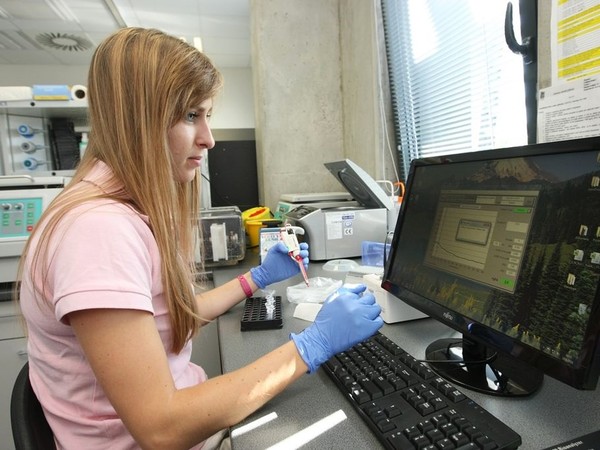Artificial intelligence (AI) algorithms will play an increasingly significant role in the search for effective cancer treatments. Machine learning methods can significantly reduce the time, effort, and cost associated with developing new drugs. IT experts from the Department of Cybernetics at the Faculty of Electrical Engineering of the Czech Technical University (FEE CTU) in Prague are collaborating on their discoveries with scientists from the Institute of Molecular and Translational Medicine (IMTM) at the Faculty of Medicine and Dentistry (FMD) of Palacký University Olomouc.
“We have managed to develop a procedure that is able to evaluate the effect of selected drugs on a culture of tumour cells from microscopic images using artificial intelligence tools. The probability of correct classification into one of the three groups with our method exceeds 98 percent, outperforming previous methods. This paves the way for much simpler high-throughput cell screening, which will contribute to faster development of new anticancer drugs,” says Jan Kybic, head of the Algorithms for Biomedical Imaging group at FEE CTU.
“Artificial intelligence and its practical applications are finding extensive use in medicine. Today, they are already routinely used in radiological diagnostics, histopathology, and endoscopic examinations. The new application we have developed in collaboration with Prof Kybic’s team at FEE CTU in Prague is the utilisation of AI in drug development. For a long time, we’ve believed that it is possible to estimate the mechanism of its effect from the reaction of cells to a potential drug over time, which is, however, impossible to evaluate by the human eye and brain,” explains Marián Hajdúch, Director of the Institute of Medical Research at the UP Faculty of Medicine and Dentistry and Medical Director of the National Institute for Cancer Research (NICR).
Two research teams and the unique research infrastructures CZ-OPENSCREEN and EATRIS-CZ have therefore joined forces to analyse images of cells exposed to drugs via artificial intelligence tools. “The results have exceeded our expectations; we have even managed to differentiate the effect of substances that are very similar from the chemical and mechanistical point of view. We will gladly continue this project and our successful collaboration with CTU in the future and will also be happy to extend our cooperation to other AI teams,” adds Marián Hajdúch.
Supercomputer speeds up image analysis and neural network training
Computer scientists at FEE CTU use phase-contrast microscopy images to analyse cell images, which can be obtained more easily and quickly than conventional fluorescence microscopy images. In addition, phase-contrast microscopy images do not damage cells and can thus be used to image live cell cultures. The findings from the research are summarised in an article published in the December issue of the scientific journal Computers in Biology and Medicine.
Scientists use extensive banks of chemical substances and instrumentation at IMTM in Olomouc, with which a large number of experiments can be carried out automatically. The time-lapse images, which capture the reaction of cell cultures exposed to the drugs, then proceed to computer processing by IT experts. At FEE CTU, they undergo analysis using AI tools.
“We use a convolutional neural network that has already been trained directly on the input images from phase-contrast microscopy. Evaluating the effect of a single contrast agent then takes a few seconds per image, assuming that the neural network is already trained, which takes several days,” Kybic says, to clarify the data evaluation process. When processing the data, the scientists use the RCI supercomputer at CTU, whose robust computing power significantly speeds up the operation.
However, the most challenging part is to programme the network and to design the appropriate algorithms, which is the result of many months of work, mainly involving PhD student Denis Baručić and postdoctoral fellow Sumit Kaushik from Prof Kybic’s team.
The research will expand from individual chemicals to hundreds of chemicals
As Kybic points out, high-throughput cell screening under standardised conditions is only one of many steps in the drug discovery process. Scientists from the Algorithms for Biomedical Imaging group at FEE CTU and IMTM UP have so far analysed the effect of a few chemicals in this way; in the next phases of their research, the size of the cohort will need to be expanded to hundreds. The researchers will also take into consideration different mechanisms of action and possibly multiple cell line types and other factors.
